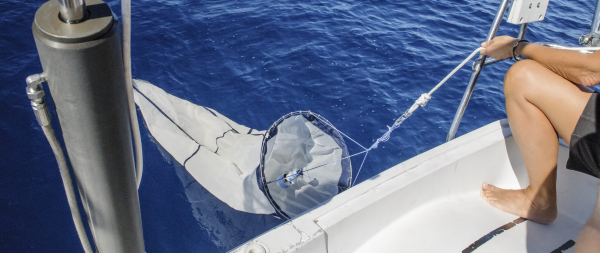Understanding the threat from microplastics and PAHs - Pollution 2020
The IWC Pollution project is moving to a new phase and will begin to assess the toxicity of microplastics and polycyclic aromatic hydrocarbons (PAHs) in cetaceans. This phase will begin with a meeting of the Steering Group in St Andrews, Scotland, in March.
The Pollution 2000+ project began in 1995 with an initial focus on Polychlorinated Biphenyls (PCBs). Initially widely used in industry and electrical appliances, PCBs were later discovered to be a persistent contaminant of air, soil and water, and their production and use was banned in many countries. However, these compounds have a very high affinity for fat and so end up at sometimes high concentrations in cetaceans. They do not break down easily in the environment so although they are no longer produced, their legacy continues to be a potential health problem for some cetacean species.
Using humpback whales and bottlenose dolphins as sample species, the IWC group produced a large body of evidence that PCBs can impact immunity, thyroid health, skeletal integrity and reproductive hormones. A mathematical model was then developed which allowed the group to explore how these physiological effects impact on overall population survival.
Having proved its accuracy, the mathematical model is now being converted into a web-based tool which will be accessible via the IWC website. It can be widely applied to species and locations, and will assist governments and other decision-makers in assessing threats and determining priorities. It will also be used in the next phase of the project, called Pollution 2020, to assess the risks to cetaceans from microplastics and PAHs.
The origin, fate and distribution of microplastics will be investigated to establish potential high risk areas and therefore species. The group will also examine the direct effects of microplastic inhalation and ingestion. Particular emphasis will be placed on the importance of krill and copepods, the prime food for many whale species. The group will assess whether they play a significant role in transferring contaminants to cetaceans.
Like PCBs, PAHs are atmospheric as well as water-borne contaminants. They are primarily found in combustion products like oil and coal, and produced as a by-product of burning. Recent oil spills have sharpened the focus on this work which will analyse the potential impact of oil exposure to cetacean habitats and populations, and the potentially increasing risks in the Arctic and sub-Antarctic as sea-ice melts, and both exploration and shipping activity expand.
To read the JCRM Special Edition on Chemical Pollutants and Cetaceans click here. http://iwc.int/journalspec01
To read the report of Pollution 2000+ Phase I click here.
http://iwc.int/index.php?cID=3359&cType=document&download=1
To read the first report of Pollution 2000+ Phase II click here. http://iwc.int/index.php?cID=3262&cType=document&download=1
To read the second report of Pollution 2000+ Phase II click here.

